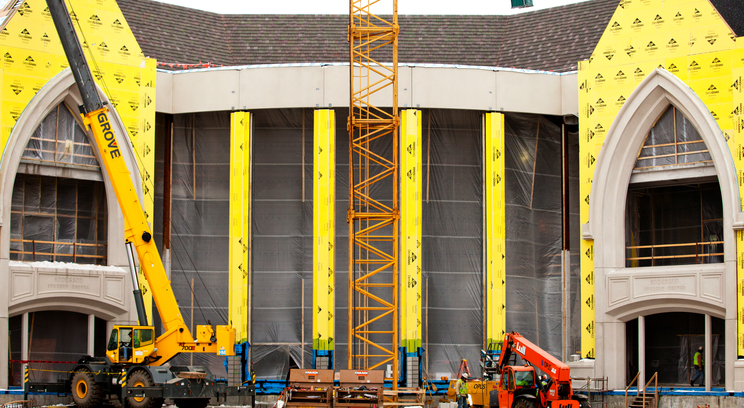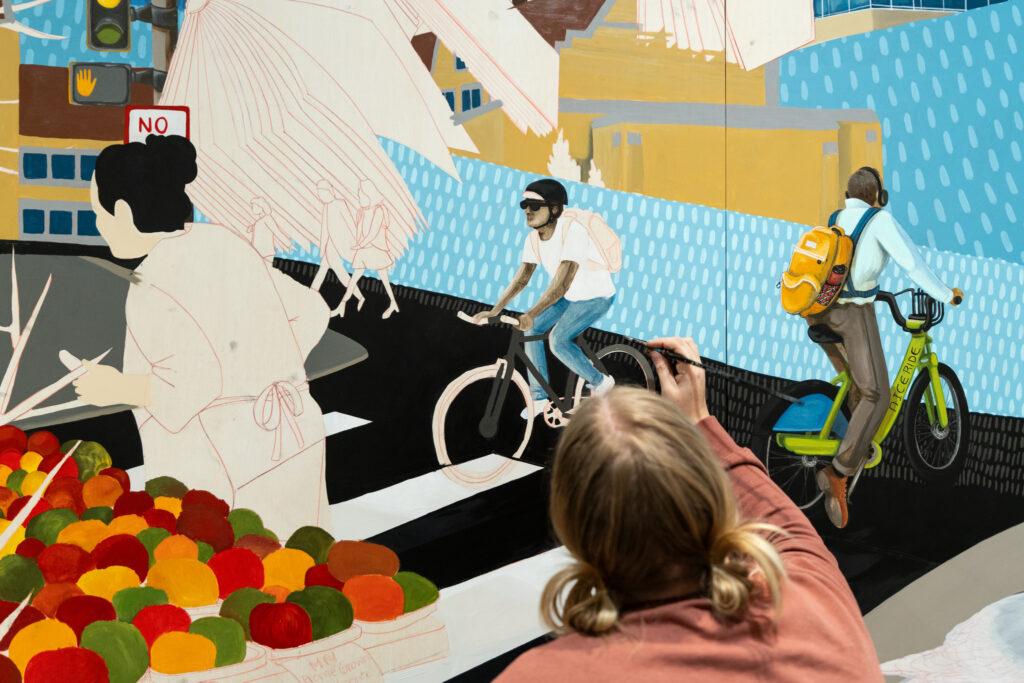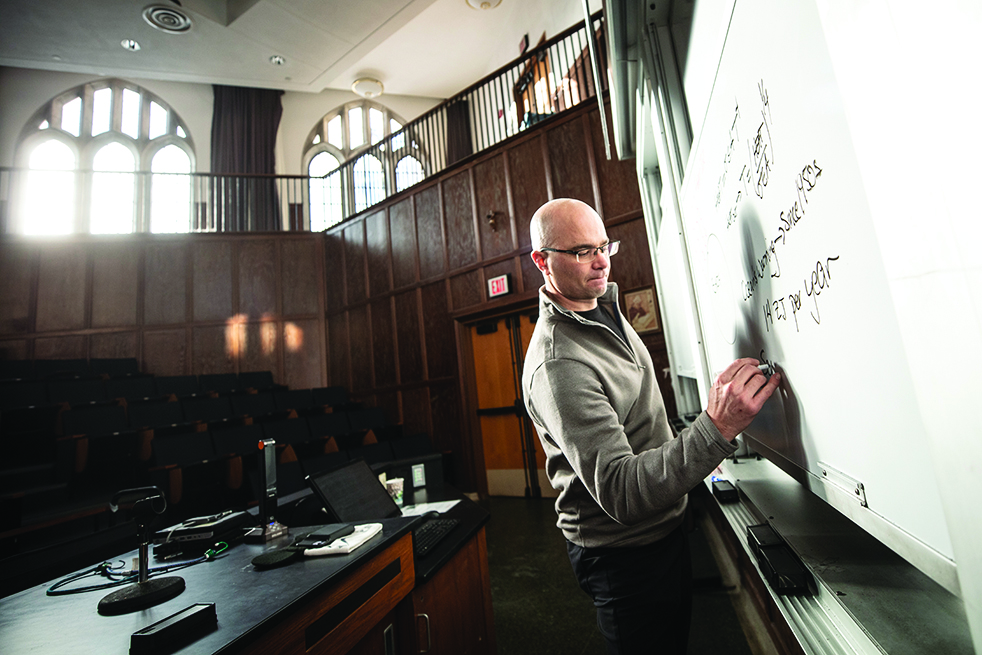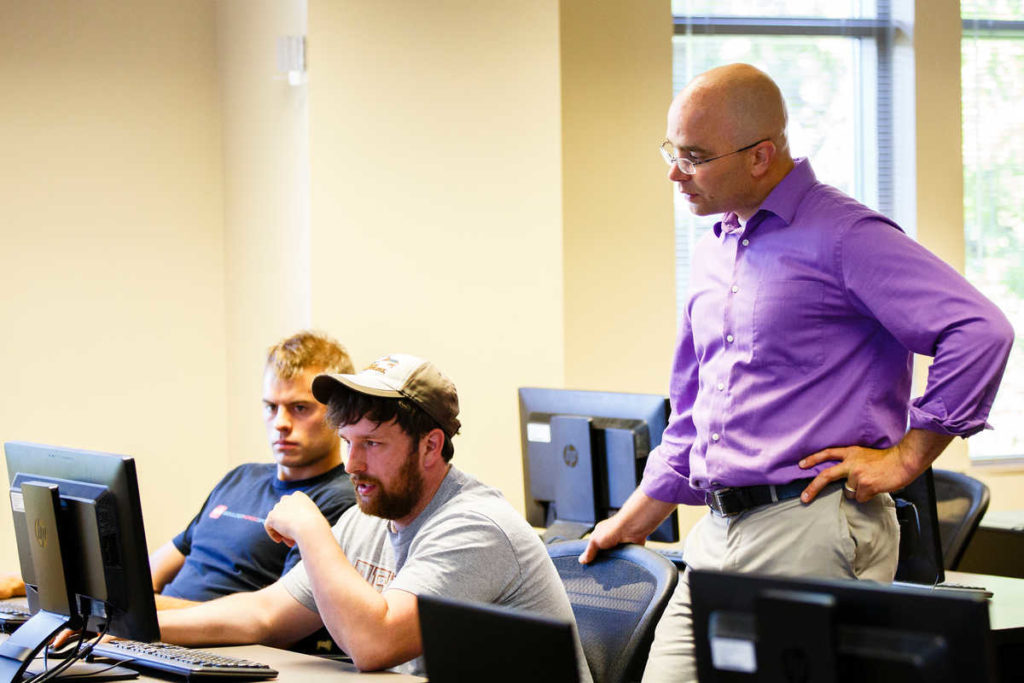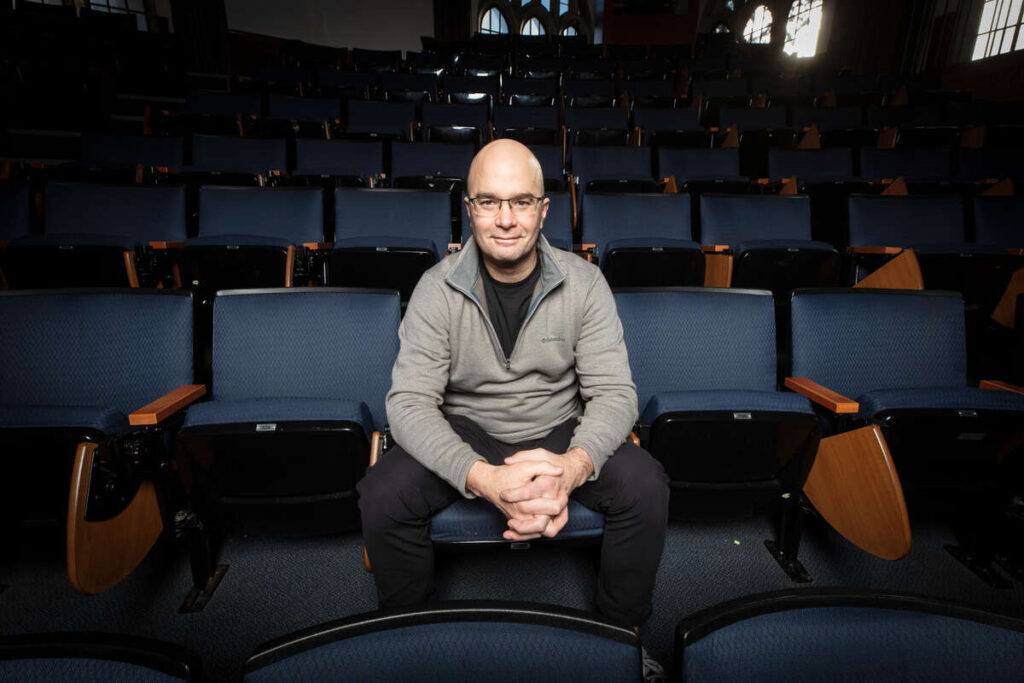The University of St. Thomas’ new Anderson Student Center has been awarded Leadership in Energy and Environmental Design (LEED) gold certification by the U.S. Green Building Council.
The university in 2008 adopted a policy of pursuing green, sustainable and energy-efficient strategies for all new building projects; this marks the first time, however, that it submitted a building for LEED certification.
“I was absolutely thrilled to hear the news,” said Dr. Mary Ann Ryan, associate vice president for student affairs. “And I am still thrilled. It reflects the commitment that our campus community, and in particular our president, Father Dennis Dease, has to environmental sustainability.”
Dease, along with college and university presidents from across the country, in 2008 signed the American College and University Presidents’ Climate Commitment.
LEED certification is granted at four levels that vary based on the number of environmentally conscious efforts that go into a facility’s design and use. To earn one of the four levels of certification, a building is awarded points in each of six categories: sustainable sites, water efficiency, energy and atmosphere, materials and resources, indoor environmental quality, and innovation and design.
Gold is the second-highest of the four LEED certification levels. “As the design process progressed, we had an idea about how many points the Anderson Student Center would earn in each category,” Ryan explained. The university’s initial goal was silver. “As the building neared completion, we thought we’d be close to gold, but we could not be sure until we got the official word.”
The Anderson Student Center received a cumulative LEED score of 43, which was four points more than the minimum required for gold.
Construction on the $66 million, 225,000-square-foot project began in 2010, but planning for LEED certification began in January 2008. That’s when a team of students, staff, architects and engineers gathered for an “Eco-Charette,” a daylong meeting that was described as “an inaugural sustainable-design effort.”
“We talked through the LEED scorecard and identified opportunities to improve environmental quality and performance in different components of the building project, such as use of recycled materials and water efficiency,” she said. “After this initial gathering, a lot of work followed as we were able to target LEED silver as our goal.
“Achieving LEED certification touches so many parts of the building. It takes coordinated leadership and work of the university, the architects, the construction team and subcontractors,” she said. “Everyone has to be on the same page and has to have the same goal.”
Opus Design Build and Opus AE Group were the contractor and architect for the project. Of the 60 buildings on St. Thomas’ Minneapolis and St. Paul campuses, over the past half century Opus has designed or built a third of them.
News of the gold certification brought smiles throughout campus. “I’m thrilled and proud of all the people at Opus and St. Thomas who were able to assist the university to accomplish this,” said Mark Vangsgard, vice president for business affairs and chief financial officer.
Dr. John Abraham, a St. Thomas engineering professor who teaches courses on thermal design and is known internationally for his work on global warming, said the gold certification “shows that St. Thomas is leading the way by constructing a campus that uses energy more wisely. In the end, this will save the university on its energy operating costs and will chart a path for other institutions to follow.”
Jerry Anderley, associate vice president of facilities management at St. Thomas, said that not only is the Anderson Student Center the university’s largest building, it is the most energy-efficient and technically advanced.
“It is very comfortable, but by design, those who use the building are unaware of all the technology. It’s top of the line, from its 98 percent efficient boiler to monitors for the exhaust hoods to water-saving plumbing fixtures,” he said. “It’s aesthetically beautiful, practical to use and a phenomenal achievement. This gives a tremendous boost to our sustainability efforts.”
Anderley said one of his favorite parts of the project was the “commissioning” of the building’s mechanical and electronic components. “A great deal of time was spent testing to make sure all the technology performed as it was designed to.”
Other features he especially likes are the use of local stone from Mankato, wood from certified forests, and drought-resistant landscaping that requires less water.
“Every time I walk into the center, I think ‘Wow, this is fantastic,’” he said. “This really is a center for students, a true gathering space.”
While this was St. Thomas’ first LEED project, OPUS has completed more than 40 LEED certified buildings, 16 of them gold. There are approximately 12,000 LEED-certified buildings worldwide.
In designing the Anderson Student Center, Opus and St. Thomas participated in Xcel Energy’s Energy Design Assistance Program that helps owners and design teams evaluate energy-conservation strategies. Jeff Mertens, senior project manager for Opus, said that while conservation measures initially were more expensive, they will provide a projected annual savings of $62,000, with an estimated payback of about four years.
Dan Young Dixon, the design architect for the project, said that in terms of energy use, the student center is designed to perform 17.5 percent better than code. With a building like the student center, which has a projected 100-year life, that will mean lower operating costs for decades to come, especially as energy costs escalate.
Young Dixon said that in addition to the energy savings, factors that contributed to the gold-level certification included water conservation measures (42.5 percent over a base building), green power (for the next three years, 100 percent of the electric power will come from renewable energy sources), and the use of open space (half of the project’s site area is vegetated).
“The Opus team is very proud of the gold certification for the center and had this monumental goal set forth at the start of the project,” Mertens said, adding that everyone involved with the project, from the architects to carpet layers, takes special pride when working on a LEED project.
St. Thomas’ LEED subcommittee for the project included staff from Student Affairs, Dining Services, Physical Plant and Opus. They reviewed the building’s environmental impact while meeting the student center’s principal mission: to be the primary gathering place for the university.
The building at Summit and Cretin avenues opened in January and is filled with large and small, formal and informal gathering places. It gave the university’s St. Paul campus new offices, shops, dining areas and recreation facilities. Complete with a grand, spiral staircase and a four-story glass atrium that overlooks a new outdoor plaza and fountain, it often is described as St. Thomas’ living room.
Ryan said the university has been analyzing quantitative and qualitative data on the building’s performance during its first semester of use. “Our research overwhelmingly supports that students both perceive the campus differently and interact differently because of this new space. Repeatedly, students in focus groups positively commented about design elements of the building, especially the light, openness and welcome feeling.
“The Anderson Student Center is exceeding our wildest expectations for student engagement,” Ryan said. “It is truly a remarkable environment.”
Work is underway on an interactive display about the LEED certification. It will be installed on the main floor of the student center near the “Tommie Central” information desk.
The student center is named for St. Thomas trustee Lee Anderson and his wife Penny, who made a $60 million gift to “Opening Doors,” the university’s $500 million capital campaign. It was the largest single contribution by an individual or a couple to a college or university in Minnesota.
